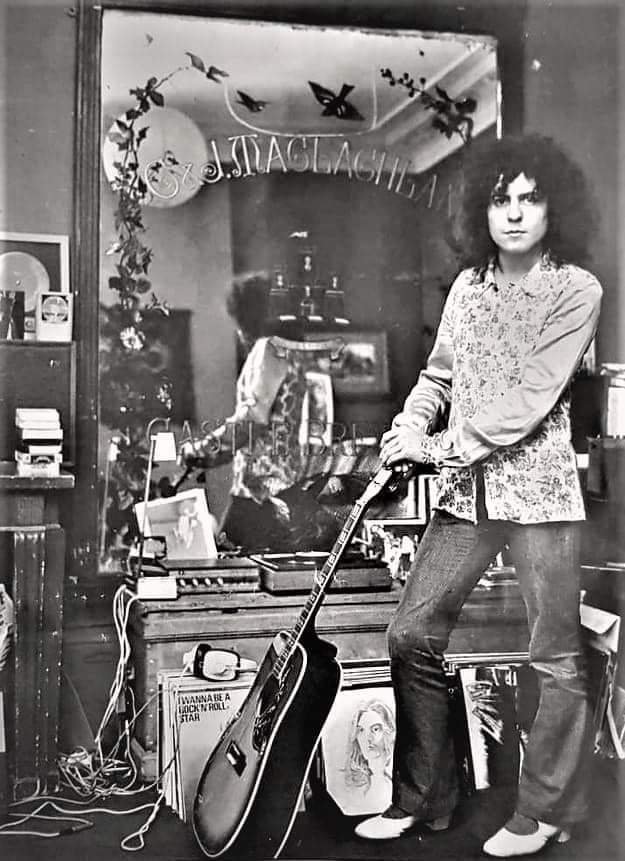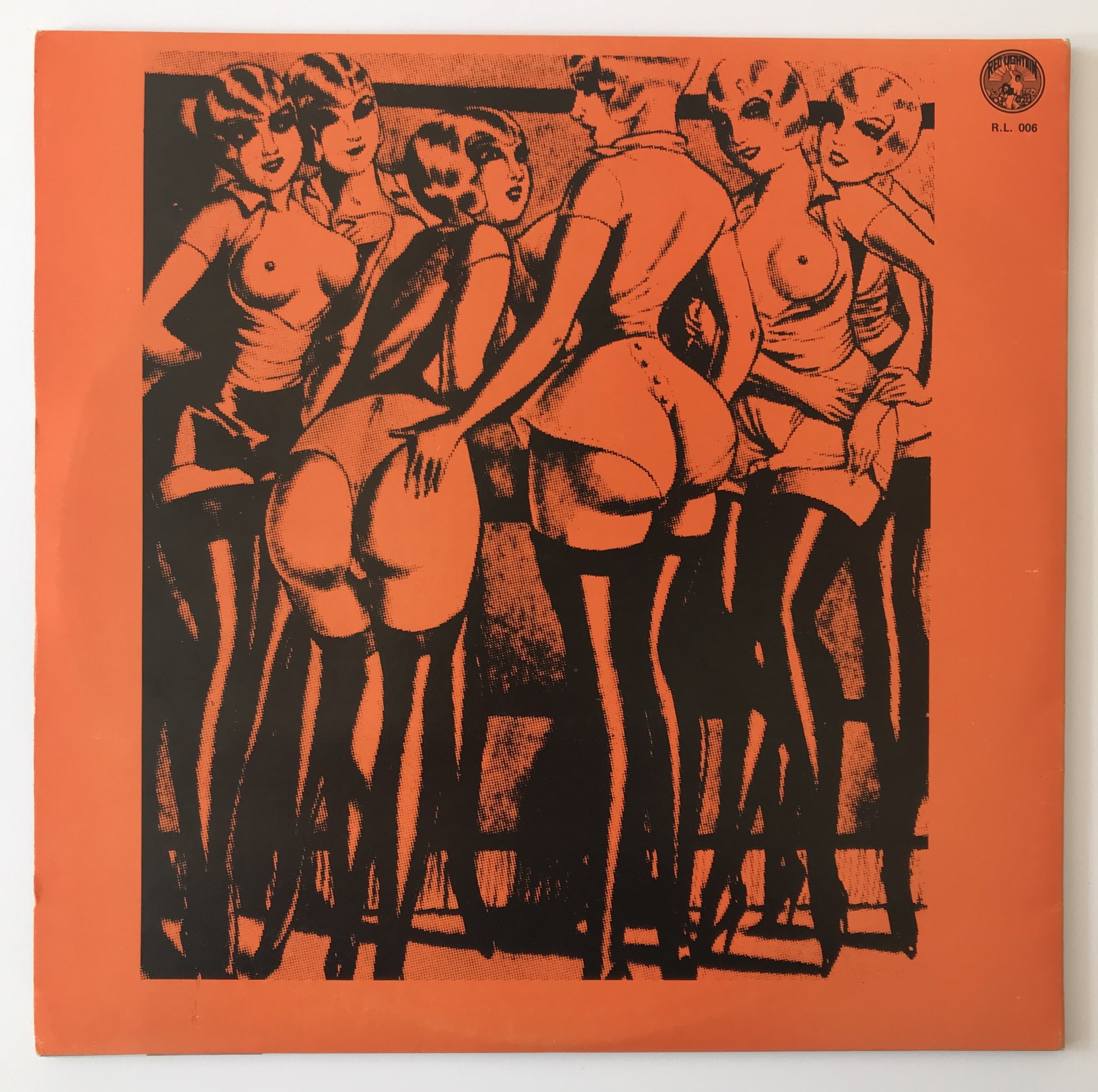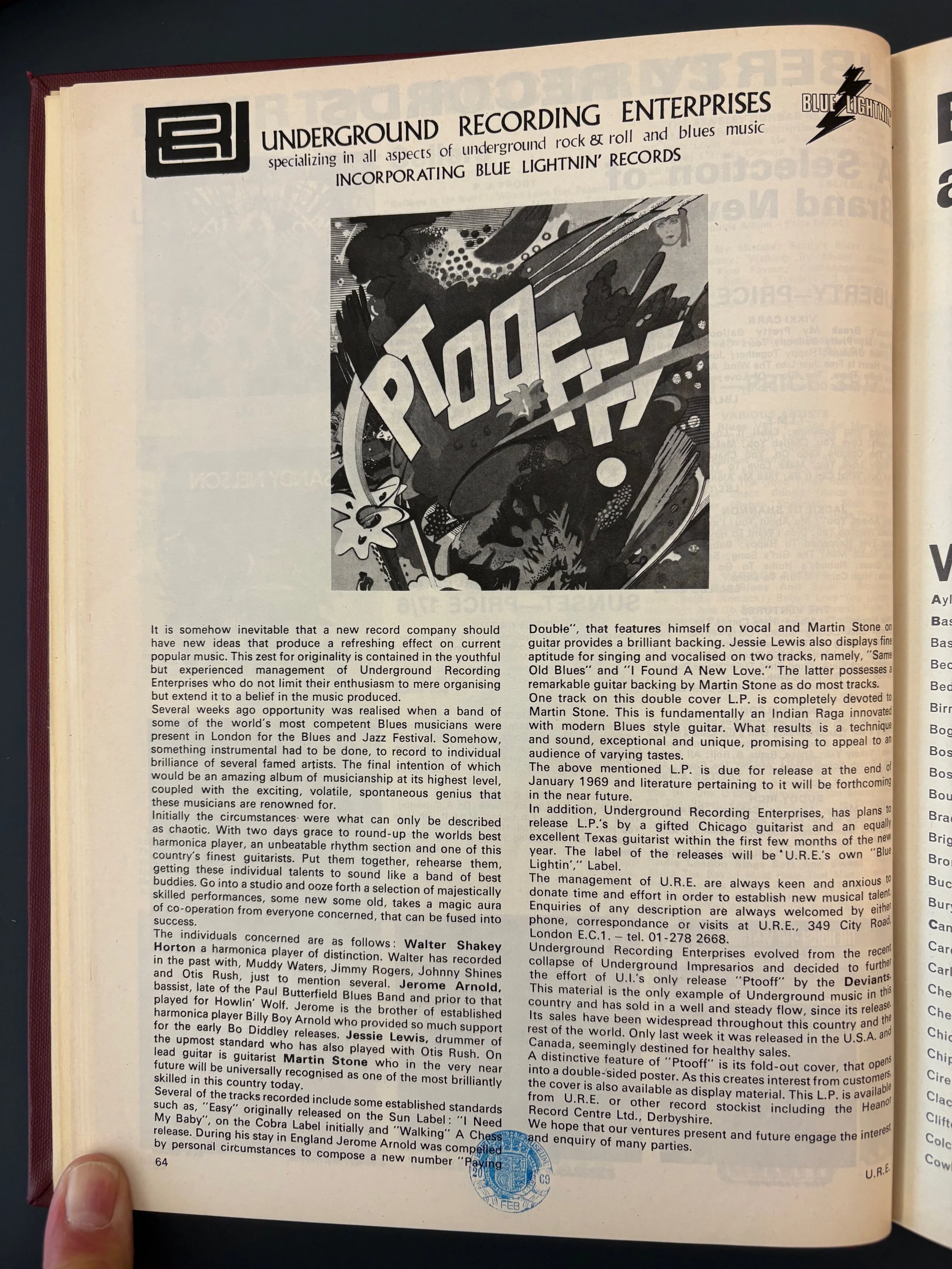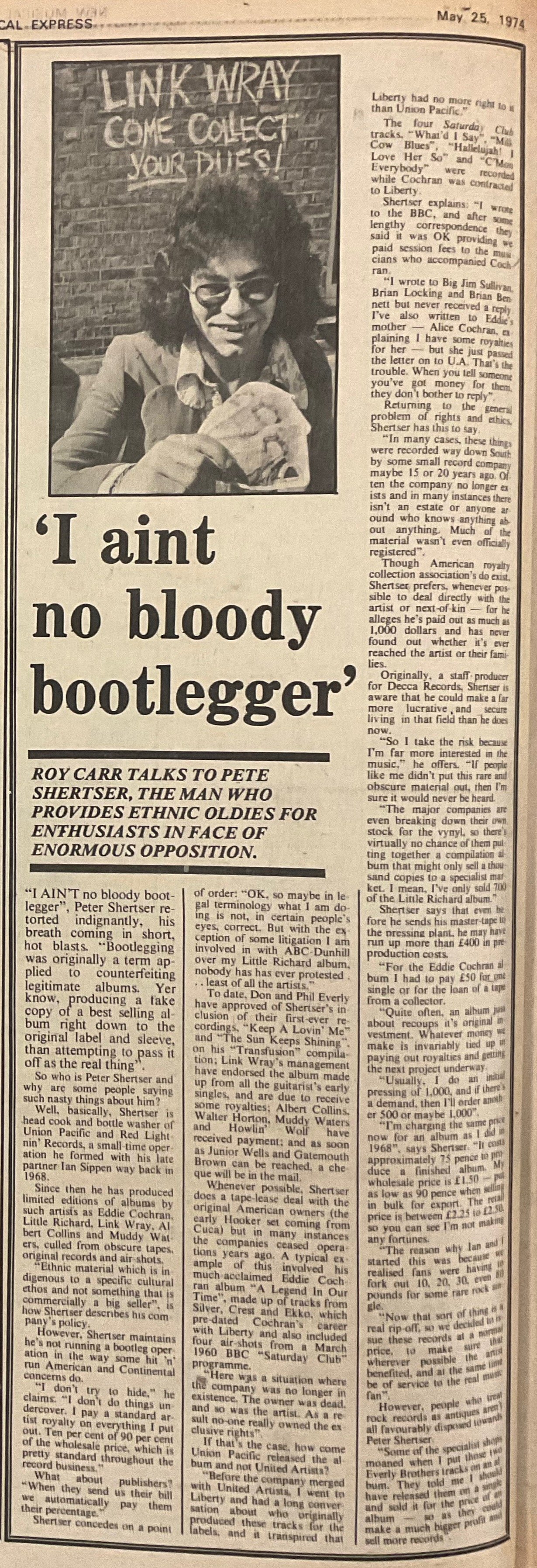Marc Bolan in his Little Venice flat, 1971. Photo by Kieron ‘Spud’ Murphy (but I coud be wrong about that and everything else)
A random post on Twitter caught my interest, not because of the picture of Bolan posing in his Little Venice flat but because a comment by @StuartPenney1 drew my attention to the album partly obscured by the guitar and to the left of the inner sleeve of Electric Warrior and Sticky Fingers. It’s an Elvis bootleg – I Wanna Be A Rock ‘n’ Roll Star – released like the other two albums in 1971.
Around the time the photograph was taken, Pete Frame, in Zigzag #21, visits Bolan at home where he finds him on the balcony with his earphones on listening to 1956 Elvis. The crux of the interview is concerned with Bolan’s new found fame, the shift from being a Freak in the Underground to being a star on Top of the Pops. At this moment in time, then, the Elvis album must have been a kind of totem for him, representing a similar pivot point when Presley shifted from Memphis to Hollywood. Well, maybe . . .
My interest in the record is that it looks like the kind of platter that The Firm, Ian Sippen and Pete Shertser, would put out on the Union Pacific label a year later. I wrote about those albums here (and their early Red Lightning blues albums here). It’s on Viktorie (RCA Victor geddit?) with sleeve notes by the immortal Vincent Lust. His older brother designed the sleeve, a raw cut n’ paste job.
Even if the bootleg has nothing to do with The Firm, it’s still getting filed next to UP003 their Little Richard album. That album’s sleeve notes are partly dedicated to a review of the Wembley appearance by the Georgia Peach, his very self, at the 1972 London Rock n Roll Show, which is described as his ‘darkest hour . . . Richard failed for the first time ever to communicate with his audience.’ Oh well, Ian and Pete have a stack of old records of his they wanna share regardless, so on with the ‘healing music that makes the blind see, the lame walk, and the dead rise up!’
You don’t get sleeve notes like that anymore . . .
Eugene Lust, Vincent’s bastard son




























